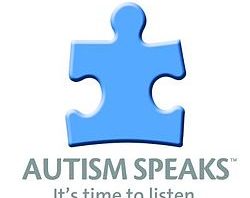The prevalence of autism has increased dramatically over the past few decades, along  with the rise of fast food, food processing, and pharmaceuticals. With this rise in autism rates, there has been a deeper delve into what could be causing it, which has been mostly attributed to environmental factors, such as xenobiotics and heavy metals contained in elevated levels within autism patients’. Just as well, there are still rare genetic cases of autism that rely on purely genetic factors to lead to autism. Environmental factors play little to no role in these cases, so raising autism patients correctly is vital. With little research funds pushed towards autism currently relative to other diseases, where would these endowments be better served? Obviously, researching both sides would be optimal, but when faced with funding environmental factors with genetic risk factors versus genetic cases and better social environments, one will be funded more than the other.
with the rise of fast food, food processing, and pharmaceuticals. With this rise in autism rates, there has been a deeper delve into what could be causing it, which has been mostly attributed to environmental factors, such as xenobiotics and heavy metals contained in elevated levels within autism patients’. Just as well, there are still rare genetic cases of autism that rely on purely genetic factors to lead to autism. Environmental factors play little to no role in these cases, so raising autism patients correctly is vital. With little research funds pushed towards autism currently relative to other diseases, where would these endowments be better served? Obviously, researching both sides would be optimal, but when faced with funding environmental factors with genetic risk factors versus genetic cases and better social environments, one will be funded more than the other.
The case with heavy metals and xenobiotics in autism patients is a combination situation. Genetic predispositions, but not a pure autism gene alone, are present that react in a manner with environmental factors that have changed over time, such that autism arises. Causation of these includes heavy metals and xenobiotics in patients in levels higher than non-autistic persons. These elevated levels have been attributed to cause oxidative stress in the brain, which, in particular pathways, leads to greater risks of developing autism in genetically prone individuals. Prevention of these could be to lower exposure to heavy metals and xenobiotics. Risks can be lowered by avoiding xenobiotics, which are any chemicals not normally found in the body, such as from pharmaceuticals and food toxins, and heavy metals, like aluminum, lead, and others, that are found in almost every possible processed product in America. Prevention of the heavy metal exposure would obviously be to place stricter regulations on products that contain these heavy metals, such that they would be produced with lesser amounts. Trying to avoid pharmaceuticals, foods, and chemicals that lead to autism could aid in xenobiotic avoidance. The vital role of understanding oxidative stress in the brain would also be of extreme use, because a safer pharmaceutical could be developed to aid in treating combination autism so that prevalence could be lowered in those vulnerable to environmental factors.
Another method of going about treating would be to examine healthy methods of living for those with genetic autism, or even combination-factored autism. Currently, there are no restrictions or real guidelines for parents with autistic children to raise their children. While parents have every legal right to bring up their children however they choose, for those with physical or mental illnesses, medical advice should be taken into serious consideration as well. School programs help autistic students to maintain a schedule and enforce guidelines as reminders for socially acceptable behaviors. They also inform parents of these methods they have carried out, typically, in hopes that parents will also carry them out. This is up to the parents whether or not they will carry them out, and unfortunately, some parents of autistic students choose to take the easy way out and negate the advice from special needs professionals at these schools. This is a purely personal interpretation of this information, but I feel that it would be well advised for parental guidelines to be legally implemented so that severely autistic children could be raised with acceptable behaviors that are non-harmful to those around them. Whether one method will be carried out or another, I feel that there are certain steps that could be taken to better the lives of families with autistic children, and the autistic patients themselves.
The Factors of Autism Increases
